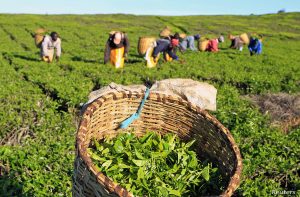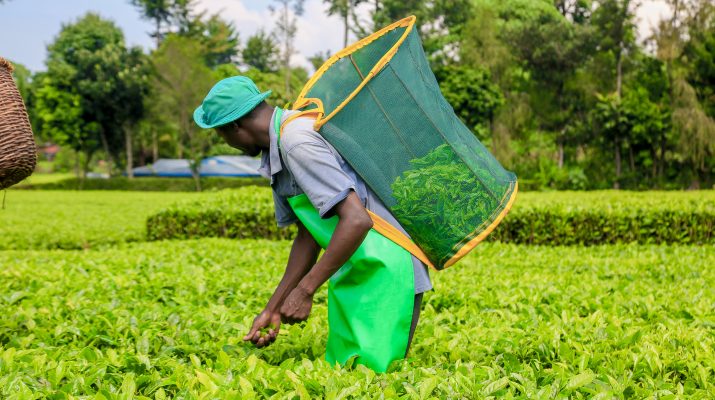
Persistent high production and a global oversupply have pushed down the average tea prices for factories managed by Kenya Tea Development Agency to USD2.22 in the nine months to March 2021, a 12% drop.
The average price dropped from USD2.52 for a similar nine-month period in the previous financial year while tea production dropped by 8.6%. KTDA data shows that the factories processed 218.9 million kilos of tea during the period compared to 239.6 million kilos a year earlier.
Despite this drop in price, KTDA prices over the same period have been 17% higher than the average Mombasa auction price for all teas, which averaged USD1.90.
KTDA and other regional producers have been grappling with poor prices over the last three years as global oversupply, high production, and economic weaknesses in key market countries exert pressure on the tea trade.
“Despite the slight decrease in production, the teas stuck in the global supply chain are still quite high and these are having an adverse effect on pricing, not just in Kenya but also other tea auctions around the world,” KTDA Management Services Managing Director, Alfred Njagi, said.
The Agriculture and Food Authority (AFA) has also cited the Covid-19 pandemic as a major driver to the continued price depression.
“Demand has also been affected to some extent by reduced consumer purchasing power due to the effect of the global economic recession that is perpetuated by the Covid-19 pandemic as well as devaluation of some foreign currencies against the US Dollar,” AFA said in a Tea Industry performance report for February.
AFA further notes that the huge amount of stocks and high production continue to exert pressure on prices but expects the amount of tea coming from factories to ease up this year.
“Notably, since the weather patterns expected this year may differ from that of last year, lower production trend recorded in the first two months is likely to continue throughout the rest of the year,” the Authority said.
Farmers are however likely to get a slight reprieve from the favourable exchange rate with the Kenyan Shilling having depreciated to an average of Sh109.05 to the US Dollar during the nine months compared to Sh102.62 a year earlier. Tea exports are made in USD and the weaker exchange rate will thus yield slightly more in Shillings.
The high tea production in Kenya is majorly a result of favorable weather conditions during the period, besides the rapid expansion of acreage under tea over the years. Data from the Kenya National Bureau of Statistics (2020) shows that smallholder farmers across the country, including those delivering to KTDA-managed factories, have been increasing acreage under tea, which stood at 163,000 hectares (2019), up from 141,800 hectares (2018) which has contributed to the increase in tea volumes on offer in the market.
In the last financial year (2019/2020), smallholder farmers under KTDA produced 1.454 billion kilograms of green leaf, up from 1.13 billion kilograms the previous year (2018/2019). This represents a 22% increase in production.
The interplay between crop production and realized prices is also evident in other tea-producing countries. According to industry data, during the same period, Rwanda’s production increased slightly by 3% and as expected, their prices remained flat. India and Sri Lanka’s production also increased by single digits with a negative effect on prices, further illustrating the effect of production on price.
Global oversupply of the beverage coupled with market disruptions from the Covid-19 pandemic has seen prices continue on a downward trend for a third consecutive year since the 2018/19 financial year. In 2018, projections from the Food and Agriculture Organization (FAO) indicated continued pressure on tea prices as a result of increased world production above demand.
KTDA continues to intensify its efforts in reducing the effects of this price drop by improving operational efficiencies to curb costs through a number of initiatives. These include investment in small hydropower stations for cheaper power supply, diversification to orthodox teas to reduce reliance on Black CTC teas, and training of farmers on financial literacy, income diversification, and management.

